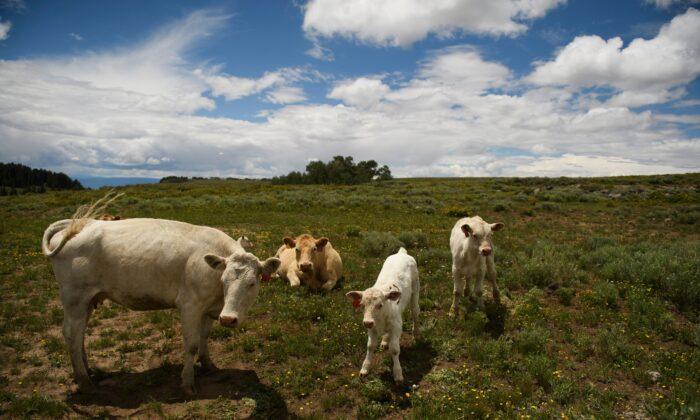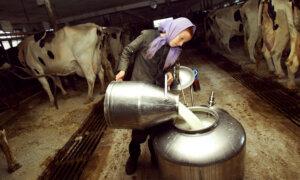A mysterious illness that has been affecting dairy farms in the Texas Panhandle over the past few weeks has been identified as bird flu, the Texas Department of Agriculture announced on Monday.
“Today, Texas Agriculture Commissioner Sid Miller received confirmation from the United States Secretary of Agriculture, Tom Vilsack, and the Animal and Plant Health Inspection Service (APHIS) that the mystery disease has been identified as a strain of Highly Pathogenic Avian Influenza (HPAI) commonly known as Bird Flu,” wrote the Texas Department of Agriculture in a press release.
Dairy cows at three Texas dairies and one Kansas dairy have tested positive, the release said. There have been additional reports of similar illness affecting dairy cows in New Mexico, and officials in dairy-heavy Iowa are also monitoring the evolving situation.
“This presents yet another hurdle for our agriculture sector in the Texas Panhandle,” Texas Agriculture Commissioner Sid Miller said in a statement. “Protecting Texas producers and the safety of our food supply chain is my top priority. The Texas Department of Agriculture will use every resource available to maintain the high standards of quality and safety that define Texas agriculture.”
State officials have been working with the U.S. Department of Agriculture (USDA), farmers, and bovine veterinarians to identify the source of the disease that was first reported on March 7, a spokeswoman at the Texas Animal Health Commission (TAHC) told The Epoch Times.
The USDA said it initiated testing on March 22 after reports of farmers finding dead wild birds on their properties.
“Federal and state agencies are moving quickly to conduct additional testing for HPAI, as well as viral genome sequencing, so that we can better understand the situation, including characterization of the HPAI strain or strains associated with these detections,” the USDA said in a news release.
The news of the outbreak among dairy cattle comes less than a week after a deceased juvenile goat on a Minnesota farm tested positive for the virus. The bird flu had affected poultry on the same farm.
No Risk to Public
Mr. Miller assured consumers it is safe to purchase and consume dairy products.“There is no threat to the public, and there will be no supply shortages,” Mr. Miller said. “No contaminated milk is known to have entered the food chain; it has all been dumped. In the rare event that some affected milk enters the food chain, the pasteurization process will kill the virus.”
The National Veterinary Services Laboratories did not find changes to the virus that would indicate a risk of transmission to the public, according to the USDA.
The disease has reportedly impacted up to 10 percent of affected dairy herds.
Mr. Miller told The Epoch Times that the illness is not fatal to the cattle and appears only to affect older cows in mid-lactation, causing milk production to drop by as much as 40 percent for seven to 10 days.
Feed consumption and rumen activity also decreases during illness. The rumen is the largest pouch of the cow’s stomach.
The cow’s milk becomes “thicker, more concentrated, colostrum-like,” which has been diagnosed as mastitis in the beginning. Affected cows may or may not get a fever, and some have transient diarrhea.
Most of the affected animals are able to recover fully and continue producing milk. However, some have been culled from herds because their milk production did not return to its normal level.
“Unlike affected poultry, I foresee there will be no need to depopulate dairy herds,” Mr. Miller said. “Cattle are expected to fully recover.”
Mr. Miller has strongly advised Texas dairies to enact all standard biosecurity measures, including “restricting access to essential personnel only, disinfecting all vehicles entering and leaving premises, isolating affected cattle, and destroying all contaminated milk.”
The release also calls on farmers to clean and disinfect all livestock watering devices and isolate drinking water that could be contaminated by waterfowl.
State and federal officials are asking farmers to notify their herd veterinarians if they suspect any cattle within their herd are displaying symptoms of illness.







